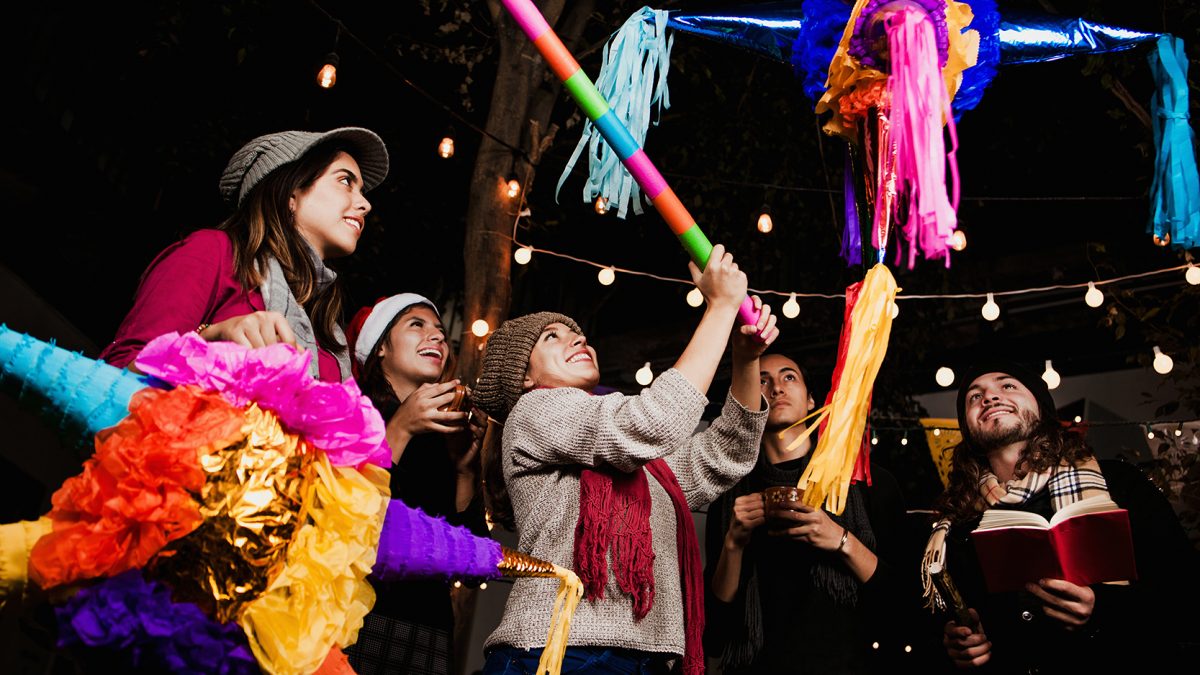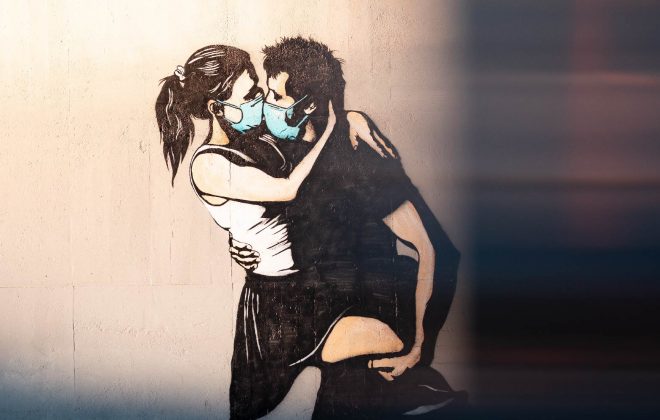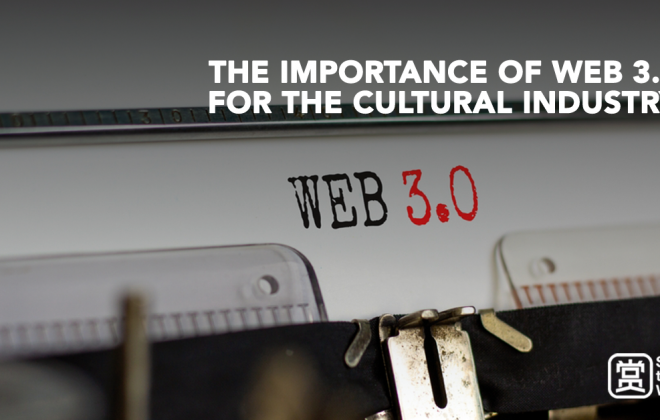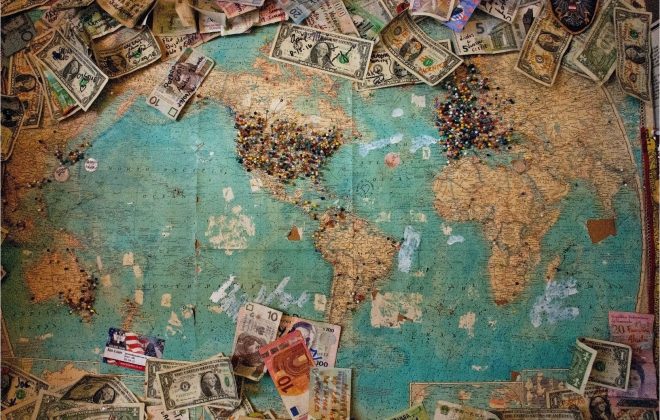Shake to Win celebrates Christmas Traditions from Peru and Veracruz
On December 29, 2020, Shake to Win had an internal event with the LATAM team including those in Veracruz and Peru in light of Christmas celebrations. The event organized by the Regional Director (Mexico & LATAM) of Shake to Win, Rafael Vega Valtierra and Karla Garcia Lopez from the team in Veracruz aim not only to give thanks to the team but also works to fulfil the mission and DNA of Shake to Win– to preserve the culture for everyone to appreciate and share.
Also present was the team from China and our founder, Emily Cheung who shared words of encouragement after a presentation by those from Veracruz and Peru. Let us take a look at their traditions below.
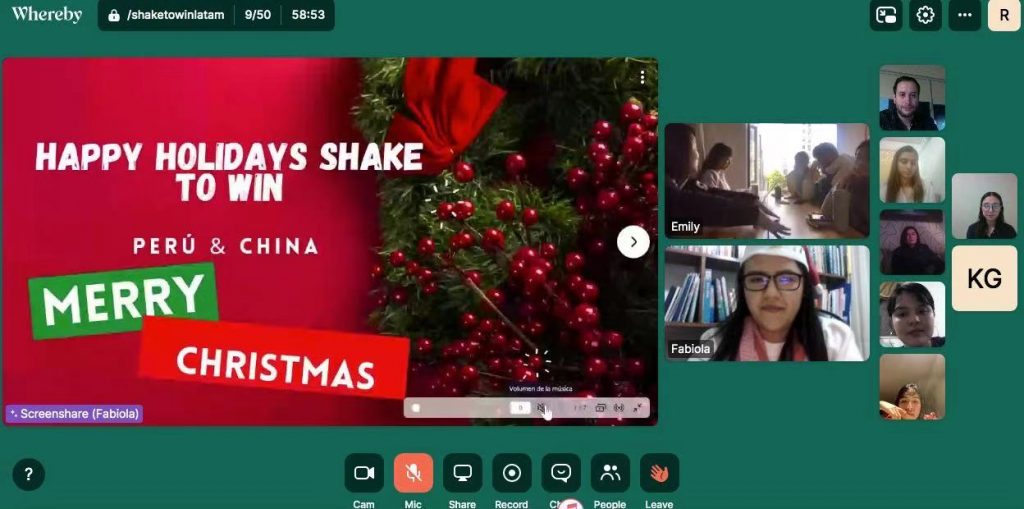
PERÚ
Fabiola Carpio Montesino shared that in her country Peru, the majority of people are Catholics. One of their traditions known as “Advent Wreath” or “Season of Advent” involves lighting a single candle every Sunday for 4 weeks before Christmas to mark its beginning. On the night of December 24th, Peruvians typically dine on a baked turkey, salads, and tamales that are sometimes accompanied by a panettone with hot chocolate. Finally, one of its best known Peruvian traditions is to have a doll known as a “Cusco child”, a doll that wears the traditional clothing of Peru.
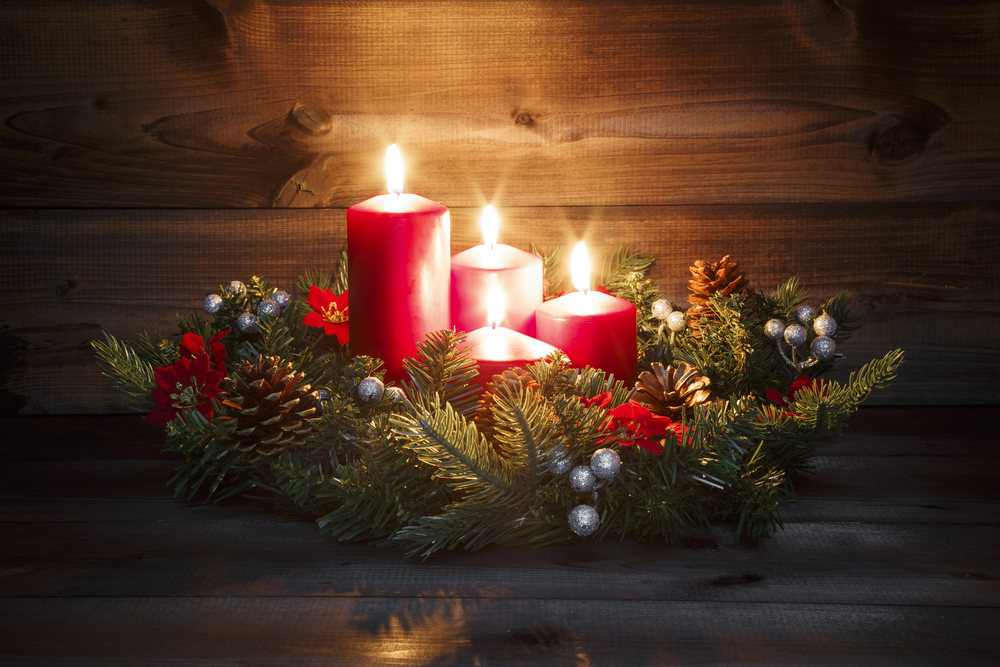
VERACRUZ
The Christmas traditions of this State were shared by Tania San Román Niaves, Karla García López, Sergio Osorno Morales, Salma Ortiz Thompson and Karla Ibáñez Zarate, who spoke of 3 well-known traditions.
La Rama: “The Branch”
This tradition arose in pre-Hispanic times where “La Rama” symbolized the renewal of nature. Today, this tradition is well known and has spread to other regions such as Oaxaca, Tabasco, and Chiapas. “La Rama” consists of a group of people who get together and decorate the branch of a tree with spotlights, balloons, spheres, and colourful things, and once they have it they go to the houses or in the streets to sing the song of “La Rama” between December 16th and 24th. Some people give money, sweets or sometimes food to those who carry “La Rama” as a sign of gratitude. This tradition changed over time and the song brought about different versions depending on the region.
El Viejo: “The Old Man”
The tradition of El Viejo was born in Veracruz when dockworkers started a protest by making loud noises with metallic objects in retaliation for not receiving a Christmas bonus or any benefits for the holiday season.
This protest continued in the following year which pushed the bosses to offer food and alcohol in order to avoid scandal. Henceforth, every year around Christmas time a bonus was requested in this cheerful, and humorous way. However, this tradition morphed in different regions. For example, in the region of Los Tuxtlas, 4 days before the end of the year, people place an old man doll made from stuffings of papers, rags, and other objects in front of their houses to collect gifts and money from neighbours. The doll is meant to represent the ending year. A can is placed near the doll with a sign that says, “An alms for this poor old man, who has left children for the new year.”
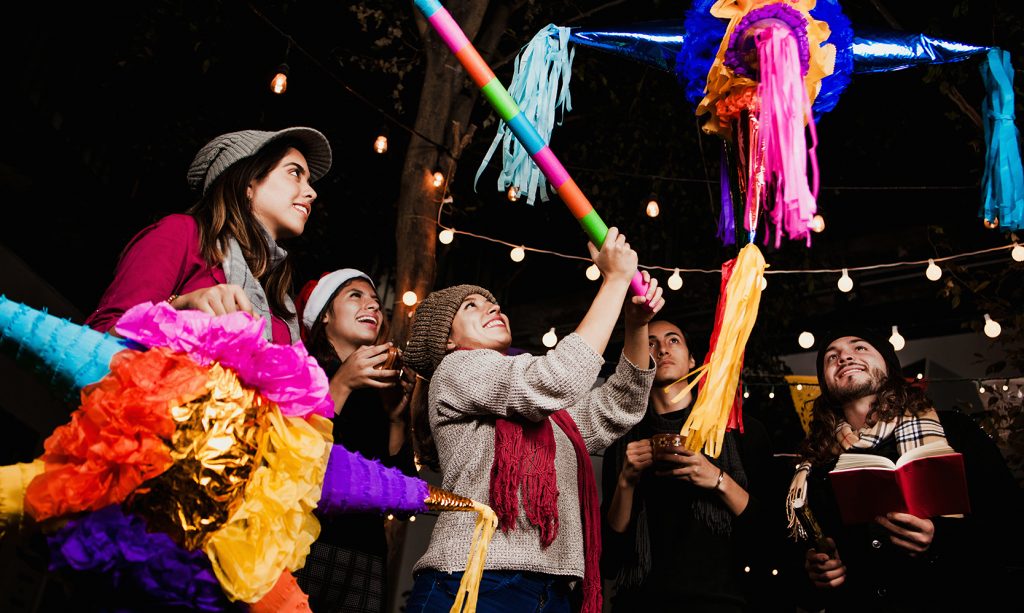
Las posadas: “Christmas Posadas”
The famous Christmas posadas dates back to the Christmas bonus masses, during which representations of the birth of Christ were performed every night from December 16th to 24th. The evangelists of San Agustin Acolman created the first posadas. Although at first it was organized in churches, over time, the posadas was held in the streets and houses of the towns and cities.
Mexicans currently celebrate Christmas posadas as a way of celebrating with neighbours, friends, and co-workers. The tradition includes different elements that make it special, such as hitting piñatas, drinking fruit punch, gifting, singing, and feasting.
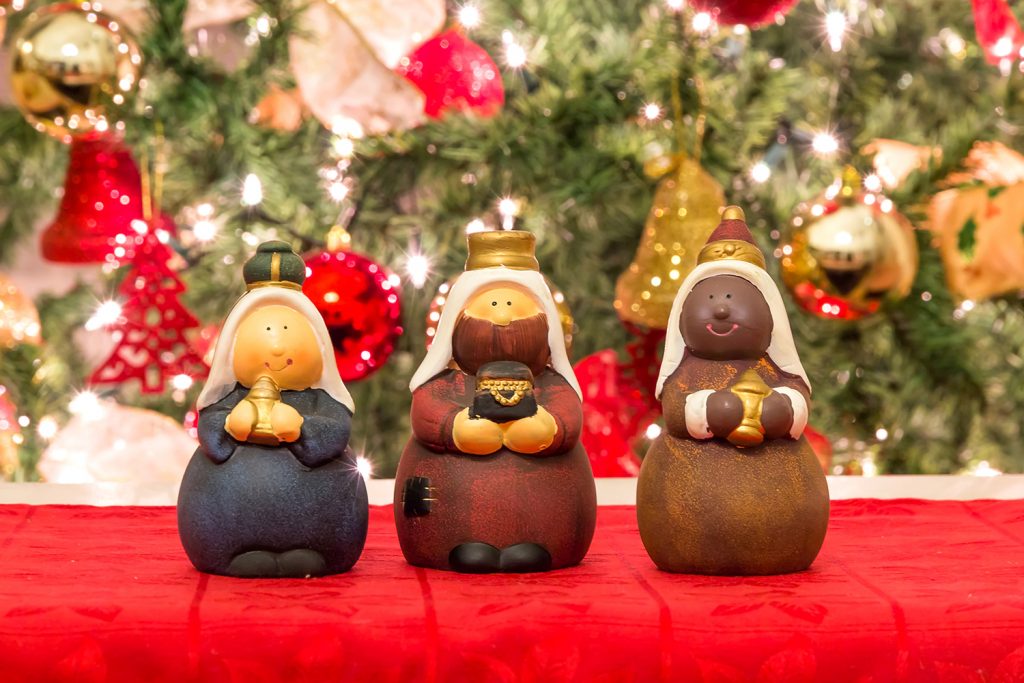
The Three Wise Men/Kings: “Los tres Reyes Magos”
The celebration of the Three Kings arose after the conquest of Mexico, and over time it was integrated with some of our popular traditions.
It is a part of the Catholic traditions of the Epiphany, in which the Three Kings from the East come to visit Jesus after his birth. The Three Kings were guided by a star towards Bethlehem, bringing the baby Jesus gifts in the form of gold, frankincense, and myrrh. Mexicans represent this event in a Nativity Set that is placed into homes where people work to creatively decorate it. Moreover, children write letters, asking the Three Kings for the toys they want. On the eve of January 6th, children leave their shoe next to a window, awakening the next to discover the gifts that the Three Kings had brought them.
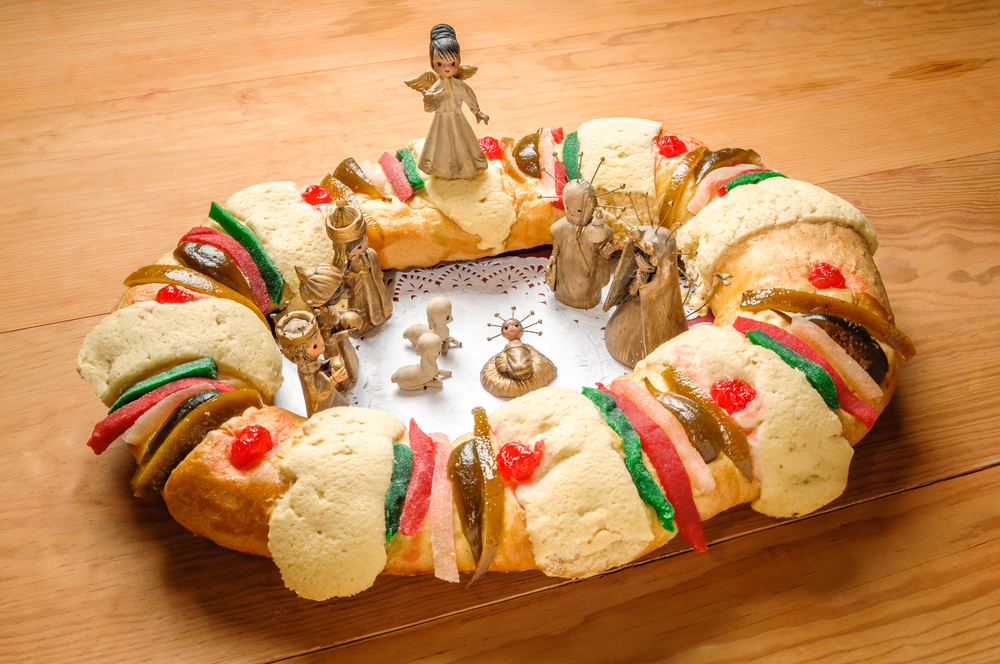
King Cake: “Rosca de Reyes”
On January 6th, the “Rosca de Reyes” (King Cake) is eaten. It is made with sweet bread and dried fruits, together with family, friends, and even at workplace colleagues.
The “Rosca de Reyes” contains several plastic “dolls” that represent the baby Jesus, in which those lucky enough to discover them when cutting the cake are the ones who will have to pay for the delicious tamales on February 2nd, the day of Candlemas.
At the end of the event, Emily Cheung, founder of Shake To Win closed the gathering, making clear the company’s mission to create bridges between cultures and countries and promoting the importance of knowing other cultures– sharing and connecting with them mutually.
For any business enquiries or collaboration please email partnership@shaketowin.net

